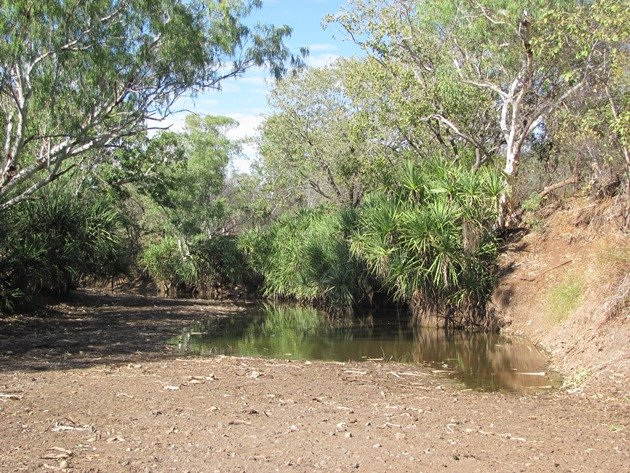
Our recent birding and camping trip along the Duncan Road included some extended exploring at the Behn River, which is 63 kilometres down the Duncan Road from the Victoria Highway in the Northern Territory. Due to the windy nature of the gravel road over rough terrain, you are actually back in Western Australia when you reach the Behn River. You do return to the Northern Territory again before the Duncan Road returns to Western Australia where it ends at Halls Creek. So, any birds we saw at the Behn River are in Western Australia!
The Behn River was not flowing in July this year, but the small pools of water still attracted numerous bird species and the freshwater crocodiles were concentrated in the deeper pools. Even the smallest pools of water were providing food and although there were not large numbers of many species there was a huge variety. Three Glossy Ibis wandered the edge of some remaining reeds searching for food and there were also Straw-necked Ibis and Australian White Ibis present. Black-fronted Dotterels ran along the muddy edges collecting food and Double-barred Finch, Long-tailed Finch and Crimson Finch came down for a drink.
Glossy Ibis
We decided to wander down the centre of the river, which was dry, so we could explore further along and see which other birds were using the remaining pools and roosting in the trees along the riverbank. It was not long before we heard the destructive sound of Red-tailed Black Cockatoos in the nearby trees! You can usually hear them snapping off small branches as they feed and the evidence that is at the bottom of where they are feeding indicates their presence.
Red-tailed Black Cockatoos
The trees along the riverbank were busy with White-winged Trillers, Black-faced Woodswallows, Willie Wagtails, Weebills, Paperbark Flycatchers, White-gaped Honeyeaters, Brown Honeyeaters, Yellow-tinted Honeyeaters, Blue-faced Honeyeaters, Black-faced Cuckoo-shrikes and White-bellied Cuckoo-shrikes. Each small pool offered different species and there was an Australasian Darter perched high on the riverbank observing the surrounding area. A White-necked Heron had found a good area in among the reeds alongside a pair of Pacific Black Ducks.
White-necked Heron
Further along the river we found a pair of Radjah Shelduck that had chosen the Behn River, but would no doubt soon move on as the water levels dropped.
Radjah Shelduck
Ours eyes often turned to the sky to observe birds of prey, which are very common in the north of Australia. Whistling Kites, Black Kites, Australian Hobby, Brown Falcon, Black-breasted Buzzard, Nankeen Kestrel and a Wedge-tailed Eagle all presented themselves during our visit to the Behn River. A group of Brolga flew in to find water and surprisingly several Australian Pelicans, which may have been heading to the large water expanse that is Lake Argyle.
Brolga
We came across a dead tree in the dry riverbed which was a roost site for a Black Kite, White-faced Heron and White-necked Heron on this occasion, but was obviously a favourite roost site for birds in general by the evidence below! Little Black Cormorants and Little Pied Cormorants were observed in the area and would no doubt also like the dead tree roost.
Black Kite, White-faced Heron and White-necked Heron
Below the roost!
Exploring further down the riverbed we found one larger and deeper pool and this is where all if the freshwater crocodiles had moved to. It was possible to get around the pool avoiding the crocodiles and explore a little further. The freshwater crocodiles can easily reach over 2 metres in length and it is not worth the risk getting too close. Although the saltwater crocodiles are the most dangerous of the two species it is advisable to respect their space. Even the local wildlife respects the presence of the freshwater crocodiles and they do not drink from the edge of the pools. Rather than risk getting attacked the marsupials will dig into the dry riverbed until they reach water and drink from that area instead. We observed both Agile Wallabies and Euros at the Behn River. Euros are shaggy, heavy built marsupials with hair rather than fur and male Euro can weigh up to 55 kilograms. Magpie-larks walked among the freshwater crocodiles ignoring their presence!
Euro
Agile Wallaby
Digging into the dry riverbed for water rather than risk a crocodile attack!
We sat for some time to watch the activity around the water and several dozen Little Corellas came in to get a drink followed by Galahs and Crested Pigeons. Australian Bustards wandered in to have a drink and on careful scanning of the plantlife along the riverbank we soon observed Nankeen Night-herons. We were excited to find our first Azure Kingfisher for the year, which was our 300th bird.
Little Corella
We had only just mentioned that it was a potential location for a Black Bittern when one flew from near where we were sitting and positioned itself on the far bank in a dead tree. They are well-camouflaged and it finally moved to a branch in the pandanus plants.
Black Bittern
The shallower pools were used by the Bar-shouldered Doves and Peaceful Doves and on dusk some Agile Wallabies chose to drink from them rather than dig along the riverbed. As is typical in the bush there were several noisy bird species including the Blue-winged Kookaburra, Southern Boobook, Grey-crowned Babblers and Rufous Whistler. The Striated Pardalotes were constantly calling and there were plenty of places along the riverbank for them to nest.
Although you are in the middle of nowhere there are a wide variety of birds to be observed. The location of the Behn River on the Duncan Road is 16 34 48.06 south and 128 57 07.18 east and even the Google Earth satellites don’t appear to pass over too often!


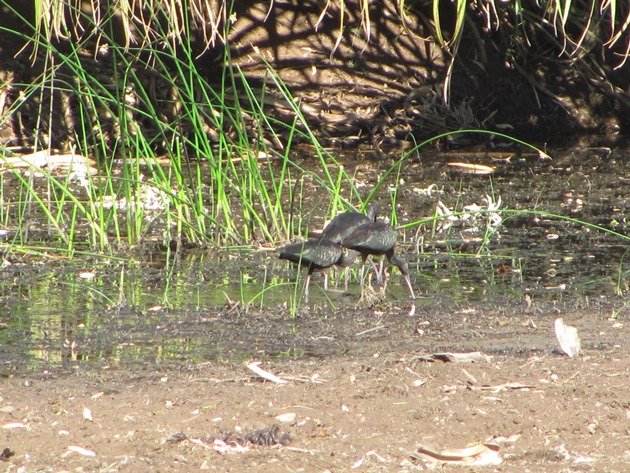
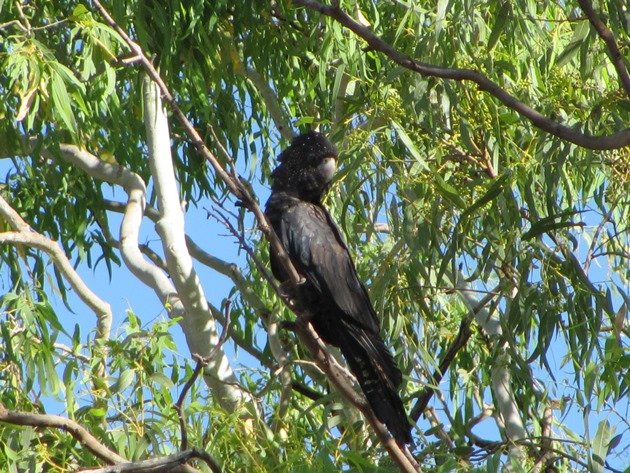
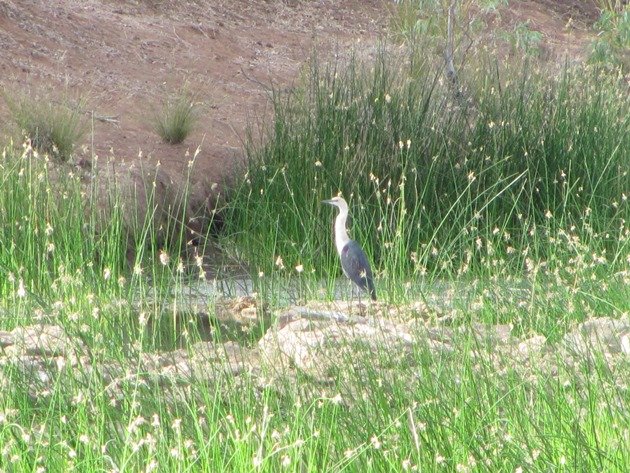

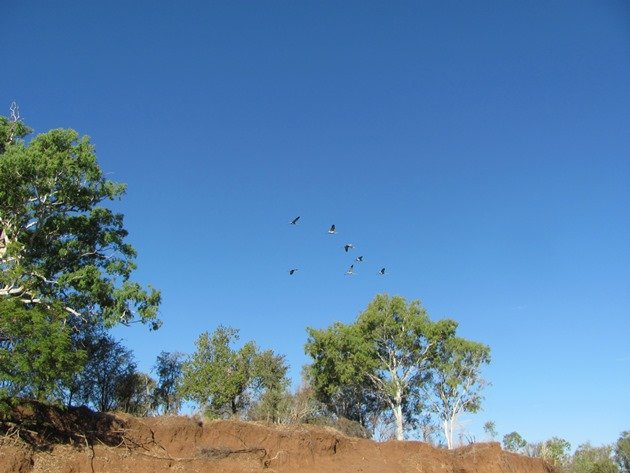
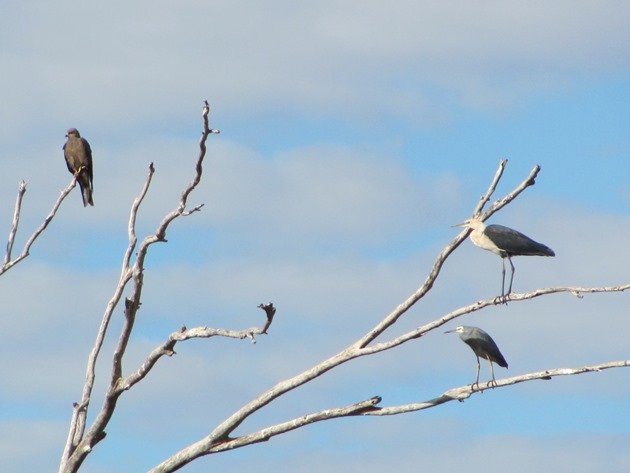
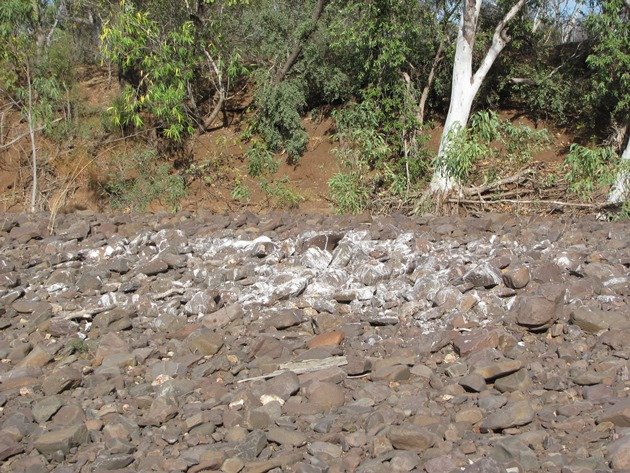

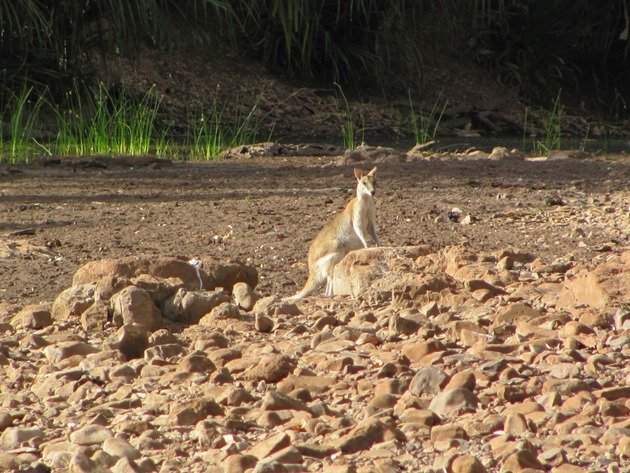

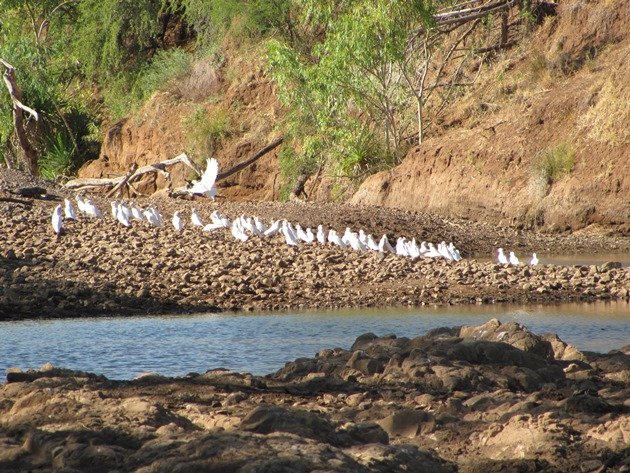
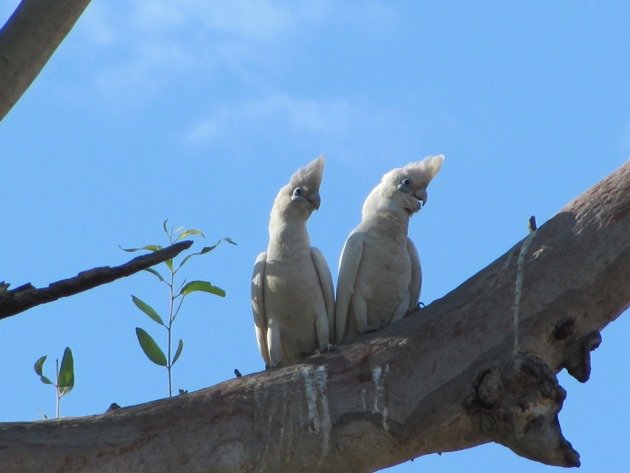
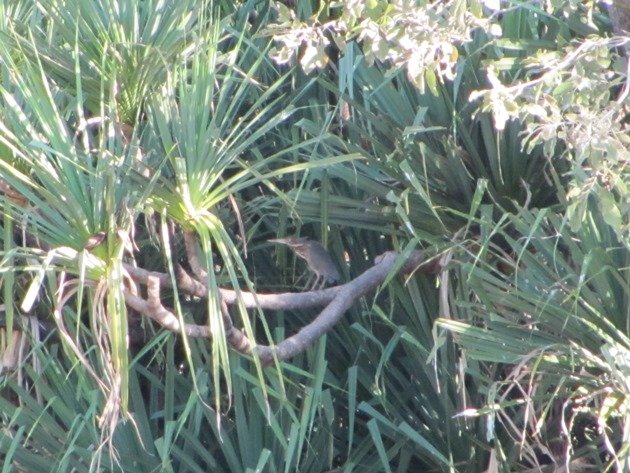











Wow, what phenomenal birding! So many of those birds are absolutely gorgeous, and you saw them under perfect birding conditions. I’d love to see Glossy Ibises and Red-tailed Black Cockatoos, not to mention marsupials I’d never even knew existed, like the Euro.
Thanks, Wendy. It is always amazing to see the variety of wildlife at remaining waterholes this time of year in the north of Australia.